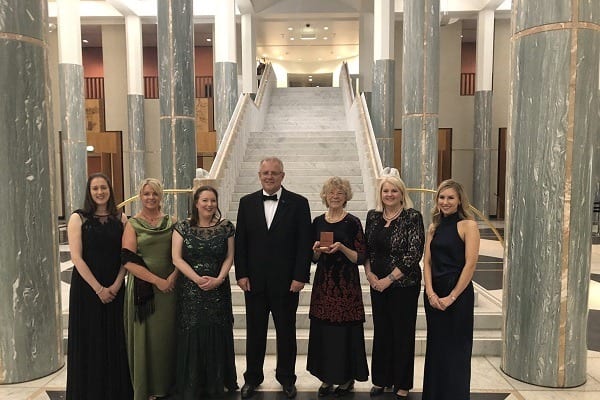I celebrate these extraordinary women for their respective achievements, for shining on centre stage, and inspiring the next generation, and for raising the visibility of Australia’s women in science, technology, engineering and mathematics (STEM).
And I hope that this is the start of enduring equal representation across a raft of awards and accolades for science, rather than a one-off welcome respite.
Australia has a long history of amazing women in STEM but, when we look beyond the 2019 Prime Minister’s prizes, the impact of women in STEM is still overlooked and under underrepresented.
In 2016, women represented only 17% of the STEM qualified population, 12% of engineers, and 15% of STEM professors. Women scientists, engineers, mathematicians and technologists are under-represented in national awards, in grant funding for fundamental and applied research, and in senior leadership positions in both academia and industry.
There has been a targeted and concerted effort to encourage and support women to nominate for the Prime Minister’s Prizes for Science this year, and the Ambassador for Women in STEM has personally sat on selection committees to ensure gender bias is not a factor. This effort must continue in subsequent years so that the momentum keeps moving forward.
Many worthwhile programs exist to support this momentum, including the Science in Australia Gender Equity program, which focuses on systemic inequities, and our own Superstars of STEM program, which raises the visibility of women across a broad range of STEM disciplines.
The Australian Research Council has recently acknowledged underrepresentation of women in its grant funding programs and on its assessment committees, and is taking steps towards increasing female participation in research. Welcome news indeed.
Whilst we are keen to participate in the ARC’s consultation process to redress gender bias in competitive grants, assessment processes and panel memberships, I look forward to a time when we don’t need a special process to recognise the crucial role that women play in science.
Until that time, our job in achieving equal representation for women in STEM is far from done. We must continue to work together, renew our efforts, be brave and ambitious, and show the world that scientists come in all genders, in all colours, and from all walks of life. Because the whole of society benefits from diversity of thought and research.
The challenges facing women in STEM are well-documented, including entrenched gender biases, limited media visibility, and leaky pipelines at all levels.
But if our limits should not be defined by our gender, what needs to be done to fix the problem? One of the major challenges is ensuring that all sectors are involved. We need to fix the system, not the women.
Science & Technology Australia is proud to be inaugural Champions of the Women in STEM Decadal Plan. Under our commitments of this plan, we’ll continue to work with government, industry, academia and the education sectors to achieve gender equity STEM. We’ll continue to support our member organisations in their own efforts towards equality, too.
We will continue championing equity, diversity and inclusion, and removing barriers to participation for women at every point in the STEM pipeline – from expanding curious minds of young girls through supporting our most senior academics and decision-makers.
This is a bigger issue than just women in STEM. STEM skills are the very foundation on which our nation’s workforce, industries and economy will flourish. The reality is that underrepresentation of women in STEM education and careers will have consequences. The current gender imbalance in STEM will almost certainly have negative impacts on Australia’s social and economic future.
As a nation, if we do not continue to deliberately include women in science and technology, we risk losing vital contributions and great advances for our country.


